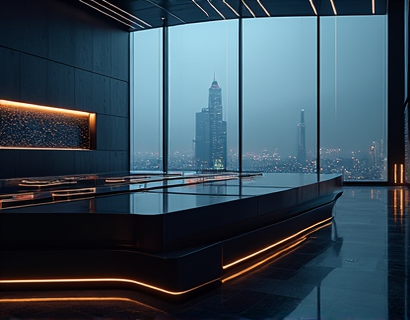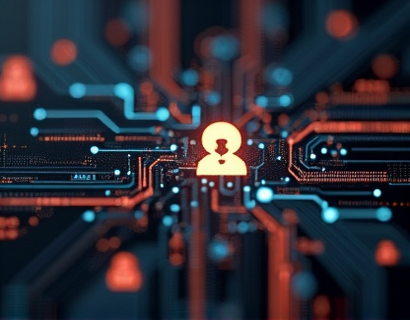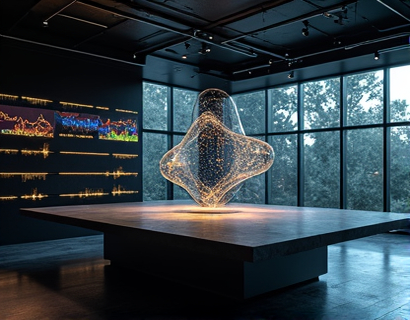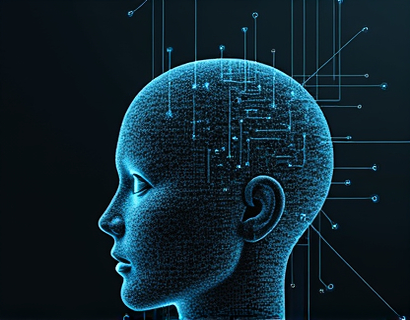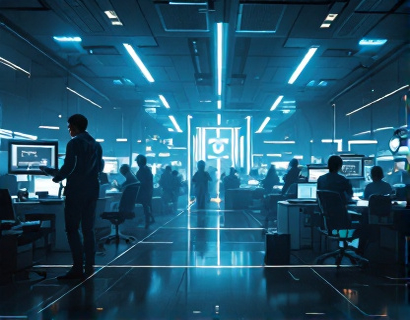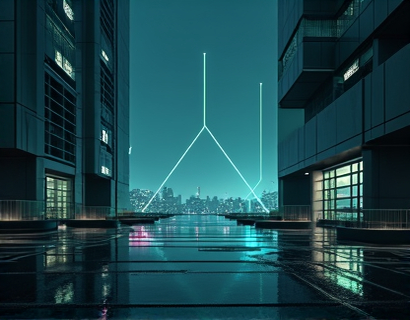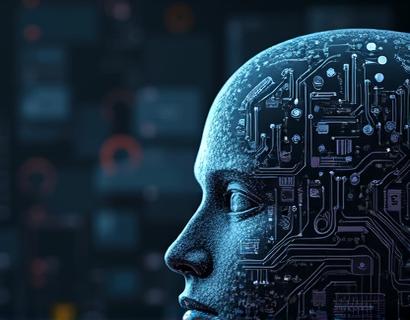UX Design Trends 2025: Navigating Innovation and Expert Insights for Digital Success
In the rapidly evolving landscape of digital design, staying ahead of the curve is crucial for any organization aiming to deliver exceptional user experiences. The year 2025 brings a new set of UX design trends that not only reflect technological advancements but also evolving user expectations. This guide delves into the latest trends, expert strategies, and practical tips to transform your UX design practice, ensuring your digital products stand out in a competitive market.
Embracing Personalization
One of the most significant trends in UX design for 2025 is the heightened focus on personalization. Users expect experiences tailored to their preferences and behaviors. Implementing adaptive interfaces that adjust based on user data can significantly enhance engagement and satisfaction. Utilize machine learning algorithms to analyze user interactions and preferences, allowing your platform to offer personalized content, recommendations, and navigation paths. This approach not only improves user experience but also increases the likelihood of conversion and customer loyalty.
To effectively implement personalization, start by collecting relevant user data through cookies, user profiles, and interactive feedback mechanisms. Ensure that data collection practices are transparent and comply with privacy regulations. Use this data to create user personas that represent different segments of your audience. Tailor the design and content based on these personas, ensuring that each user feels understood and valued.
Accessibility as a Core Principle
Accessibility is no longer a niche concern but a fundamental aspect of UX design. The Web Content Accessibility Guidelines (WCAG) continue to evolve, and organizations are increasingly held accountable for creating inclusive digital experiences. Designing for accessibility benefits all users, not just those with disabilities. It enhances usability for everyone, from older users to those in regions with limited access to advanced devices.
Incorporate accessibility into your design process from the outset. Use semantic HTML, ensure sufficient color contrast, and provide alternative text for images. Implement keyboard navigation and screen reader support to make your content accessible to users with various disabilities. Conduct regular accessibility audits and involve users with disabilities in your testing process to gain valuable insights and identify areas for improvement.
Voice User Interface (VUI) Design
The rise of smart speakers, virtual assistants, and voice-activated devices has propelled VUI design to the forefront of UX trends. Users are increasingly interacting with digital products through voice commands, making it essential to design intuitive and seamless voice experiences. VUI design requires a different approach compared to traditional interfaces, focusing on natural language processing, conversational flow, and context awareness.
Start by understanding the context in which your voice interface will be used. Design conversations that are concise, clear, and contextually relevant. Use prompts and confirmations to guide users through the interaction, ensuring they understand what is expected of them. Test your VUI with real users to refine the conversational flow and address any usability issues. Consider integrating multi-modal interactions, allowing users to switch between voice and touch inputs for a more flexible experience.
Micro-Interactions and Feedback
Micro-interactions are small, focused interactions designed to provide immediate feedback and enhance the user experience. In 2025, these subtle yet impactful elements are becoming more prevalent as users seek immediate gratification and confirmation of their actions. Micro-interactions can range from loading animations to form validation messages, each serving to guide users and make the interface more engaging.
Design micro-interactions that are meaningful and aligned with user expectations. Use animations sparingly to avoid overwhelming the user, but ensure they are smooth and purposeful. Provide clear and timely feedback for user actions, such as button clicks or form submissions. Consistency in design and behavior across micro-interactions helps build a cohesive and intuitive user experience.
Dark Mode and Color Preferences
The trend towards dark mode and customizable color schemes reflects users' growing demand for personalized visual experiences. Dark mode not only reduces eye strain in low-light environments but also conserves battery life on OLED displays. Offering users the option to switch between light and dark themes, as well as custom color palettes, can significantly enhance their comfort and satisfaction.
Implement dark mode as a default option in your design system, ensuring that all elements, including text, buttons, and backgrounds, are optimized for this mode. Use CSS variables to make it easy to switch themes dynamically. Provide a color picker or predefined themes to allow users to customize the appearance of your interface. Test the readability and aesthetic appeal of different color schemes to ensure they meet user needs and brand guidelines.
AI-Powered Design Tools
The integration of artificial intelligence (AI) in UX design is transforming the way designers create and optimize digital experiences. AI-powered tools can automate repetitive tasks, provide data-driven insights, and even generate design prototypes. These tools help designers focus on higher-level creative decisions while improving efficiency and accuracy.
Leverage AI tools for tasks such as user research, A/B testing, and usability analysis. AI can analyze large datasets to identify patterns and predict user behavior, informing design decisions with data-driven insights. Use AI-driven design generators to create multiple prototype variations quickly, allowing you to test and iterate more effectively. However, it's crucial to maintain a human touch, ensuring that AI-generated designs align with your brand and user needs.
Sustainable Design
Sustainability is becoming a key consideration in UX design, as users and organizations increasingly prioritize environmental responsibility. Sustainable design involves creating digital products that minimize resource consumption and reduce environmental impact. This can include optimizing load times to reduce energy usage, designing for longevity to minimize the need for frequent updates, and using eco-friendly hosting solutions.
Start by conducting a sustainability audit of your digital products, identifying areas where improvements can be made. Optimize images and assets to reduce file sizes without compromising quality. Implement lazy loading and code splitting to improve load times and reduce server load. Choose hosting providers that use renewable energy sources and consider the carbon footprint of your entire digital ecosystem. Communicate your sustainability efforts to users, as transparency can enhance brand loyalty and trust.
Future-Proofing Your Design
With technology advancing rapidly, future-proofing your UX design is essential to ensure long-term relevance and functionality. This involves anticipating emerging technologies and trends that may impact user interactions and experiences. Stay informed about developments in areas such as augmented reality (AR), virtual reality (VR), and 5G connectivity, and consider how these technologies can enhance your digital products.
Design with flexibility and scalability in mind, allowing for easy integration of new features and technologies. Use modular design approaches to create components that can be reused and adapted as needed. Conduct regular reviews of your design system to identify opportunities for improvement and innovation. Engage with your user community to gather feedback on new technologies and features, ensuring that your design remains aligned with user expectations and technological advancements.
In conclusion, the UX design trends of 2025 offer a wealth of opportunities to enhance user satisfaction and drive digital success. By embracing personalization, prioritizing accessibility, integrating voice interfaces, refining micro-interactions, supporting sustainable practices, leveraging AI tools, and future-proofing your designs, you can create digital products that not only meet but exceed user expectations. Stay informed, stay innovative, and continue to evolve your UX design practice to stay ahead in the digital landscape.




